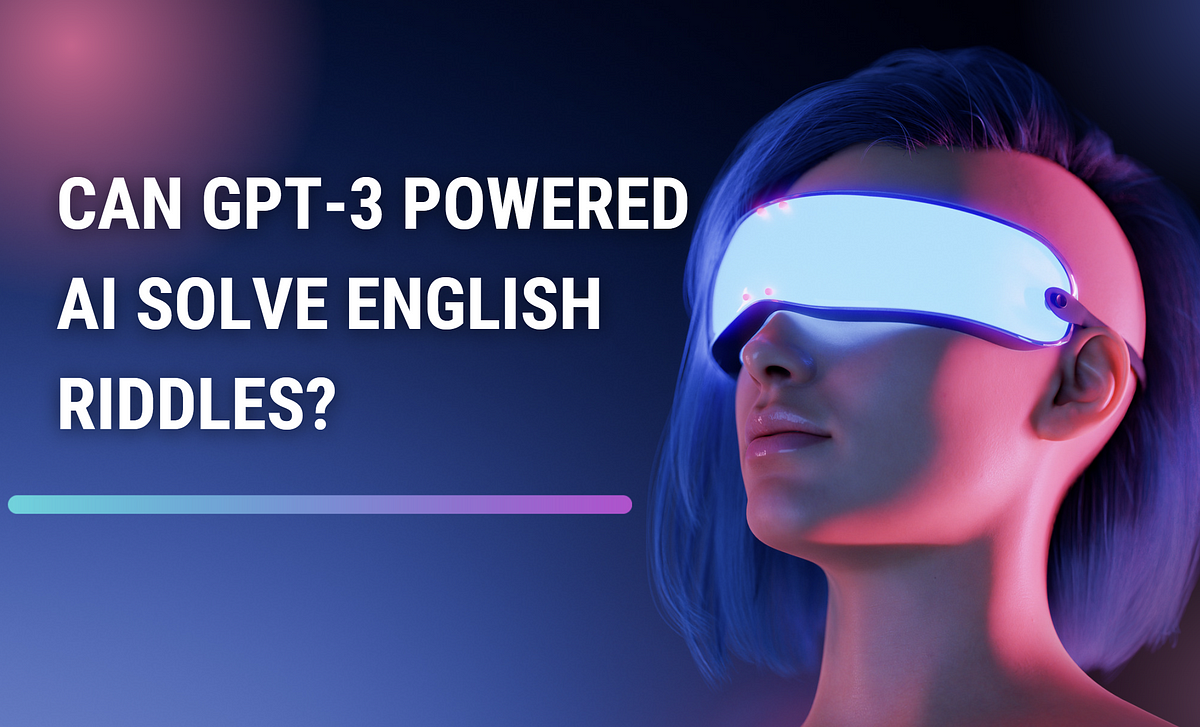In the ever-evolving landscape of artificial intelligence (AI), one fascinating aspect remains the ability to tackle challenges that require not just computational power, but also cognitive reasoning and understanding of language nuances. Among the myriad of tasks, riddle-solving stands out as an intriguing domain where AI models are put to the test, navigating through layers of ambiguity and linguistic subtleties to unravel the enigmatic nature of these puzzling conundrums.
Riddles, often rooted in ancient folklore and modern-day culture alike, serve as intellectual stimulants, prompting individuals to engage in lateral thinking and problem-solving. They are not merely exercises in wit but also windows into the complexities of human cognition. From classic brain teasers like “What has a head, a tail, but no body?” to contemporary mind-benders like “I speak without a mouth and hear without ears. I have no body, but I come alive with the wind,” riddles span generations, transcending cultural boundaries and sparking curiosity across diverse audiences.
For AI models, the challenge lies not only in deciphering the literal meaning of the riddle but also in grasping the underlying context, humor, and linguistic nuances that often characterize these perplexing statements. Herein lies the crux of the endeavor: teaching machines to think beyond binary logic and embrace the shades of ambiguity inherent in human communication.
At the heart of riddle-solving AI lies natural language processing (NLP), a branch of AI dedicated to understanding and interpreting human language. Through advanced algorithms and deep learning techniques, AI models can analyze textual data, identify patterns, and derive meaning from linguistic cues. However, when it comes to riddles, conventional NLP approaches encounter formidable obstacles due to the inherent ambiguity and figurative language employed in these puzzles.
Consider, for instance, the riddle: “The more you take, the more you leave behind. What am I?” While humans may quickly recognize the answer—footsteps—AI models must grapple with multiple layers of interpretation. They must discern the metaphorical usage of language (“take” and “leave behind”) and draw upon contextual knowledge to arrive at the solution. This necessitates a deeper understanding of semantics, pragmatics, and cultural references—attributes that challenge traditional AI systems.
To overcome these hurdles, researchers have devised innovative strategies, blending computational prowess with cognitive insights to enhance AI’s riddle-solving capabilities. One approach involves leveraging large-scale language models, such as OpenAI’s GPT (Generative Pre-trained Transformer), which harness vast amounts of textual data to develop contextual understanding and inferential reasoning skills. By exposing these models to diverse riddles and their solutions, researchers can fine-tune their ability to grasp linguistic subtleties and discern implicit meanings.
Furthermore, researchers are exploring techniques to imbue AI models with meta-cognitive abilities, enabling them to reflect on their own reasoning processes and refine their strategies iteratively. This entails developing mechanisms for self-correction, hypothesis generation, and uncertainty estimation—a step towards creating AI systems that not only solve riddles but also learn from their experiences akin to human cognition.
Another avenue of exploration lies in incorporating multimodal learning, wherein AI models integrate textual cues with visual and auditory inputs to derive a more holistic understanding of the riddle. By analyzing accompanying images, sounds, or contextual cues, these models can enhance their comprehension and disambiguation capabilities, mimicking the multisensory processing inherent in human perception.
Despite these advancements, significant challenges persist on the path to AI-powered riddle mastery. One such challenge is the diversity and novelty of riddles, which span a wide spectrum of themes, structures, and linguistic styles. Unlike structured data tasks where patterns are discernible and rules are explicit, riddles often defy categorization, requiring AI models to adapt dynamically to new stimuli and problem-solving contexts.
Moreover, riddles are deeply embedded in cultural contexts, reflecting the beliefs, customs, and idiomatic expressions of diverse communities. Bridging this cultural gap poses a formidable challenge for AI models, necessitating not only linguistic proficiency but also cultural awareness and contextual understanding—an endeavor that underscores the interdisciplinary nature of AI research.
Ethical considerations also loom large in the realm of AI riddle-solving, particularly concerning the potential biases embedded in training data and algorithmic decision-making. As AI models learn from human-generated datasets, they risk perpetuating societal biases and stereotypes encoded within the data—a phenomenon that can manifest in riddle-solving scenarios, influencing the interpretation and generation of solutions.
Conclusion
The quest to imbue AI models with riddle-solving prowess represents a fascinating intersection of linguistics, cognitive science, and computer engineering. As researchers continue to unravel the mysteries of human cognition and develop increasingly sophisticated AI algorithms, the enigmatic world of riddles serves as both a challenge and a testament to the boundless potential of artificial intelligence. By harnessing the power of language, reasoning, and cultural understanding, AI models inch closer to unraveling the age-old mysteries that have captivated human minds for centuries. Yet, amidst the technological triumphs lies a poignant reminder of the enduring complexity and richness of human creativity—a legacy that transcends the confines of algorithms and resonates across generations, sparking wonder and curiosity in the hearts of all who dare to ponder the riddles of existence.

